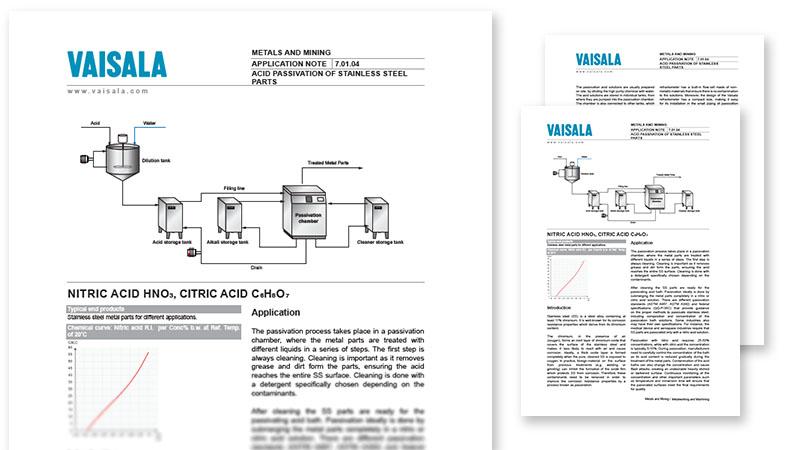Application Note
Acid Passivation of Stainless-Steel Parts
Monitoring of concentration of nitric acid (HNO3), citric acid (C6H8O7) in stainless steel passivation process
Passivation is the process of metal finishing by removing contaminants in order to improve the corrosion resistance properties.
Passivation process consists of several steps where the metal parts are treated with different liquids.
After cleaning, stainless steel parts are going through a passivating acid bath. This is done by submerging the metal parts completely in a nitric or citric acid solution.
For efficient passivation process, it is important to monitor the composition and concentration of the passivation bath solutions. The bath needs to be replenished as acid concentration in it is gradually reduced during the treatment of the metal parts. Contamination of the acid baths can also change the concentration and cause flash attacks, creating an undesirable heavily etched or darkened surface.
After the passivation, the parts are rinsed and neutralized with an alkali such as sodium hydroxide, or post-treatment is made using sodium dichromate.
Vaisala PolarisTM process refractometer is a safe, reliable and quick method to monitor that the passivation is performed at all times within the recipe specifications. The in-line refractometer is designed specifically for measurement of chemically aggressive solutions, ensuring complete compatibility with the acid and long-term performance.
Learn the details of the acid passivation of stainless steel from the application note.
Download the application note in PDF by filling the form.
Go back to all Chemicals & Allied Products applications

You can modify your preference settings or unsubscribe at any time here